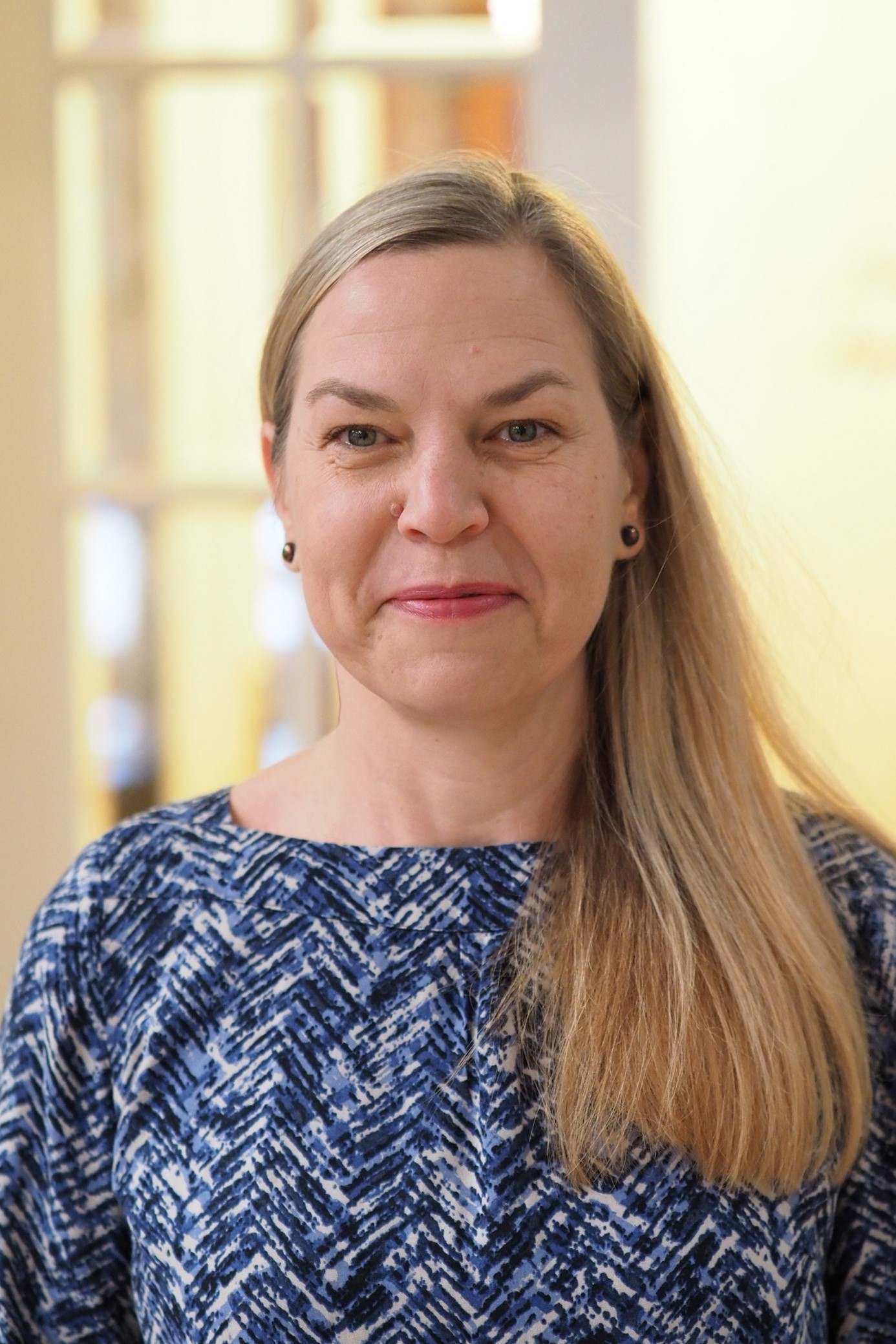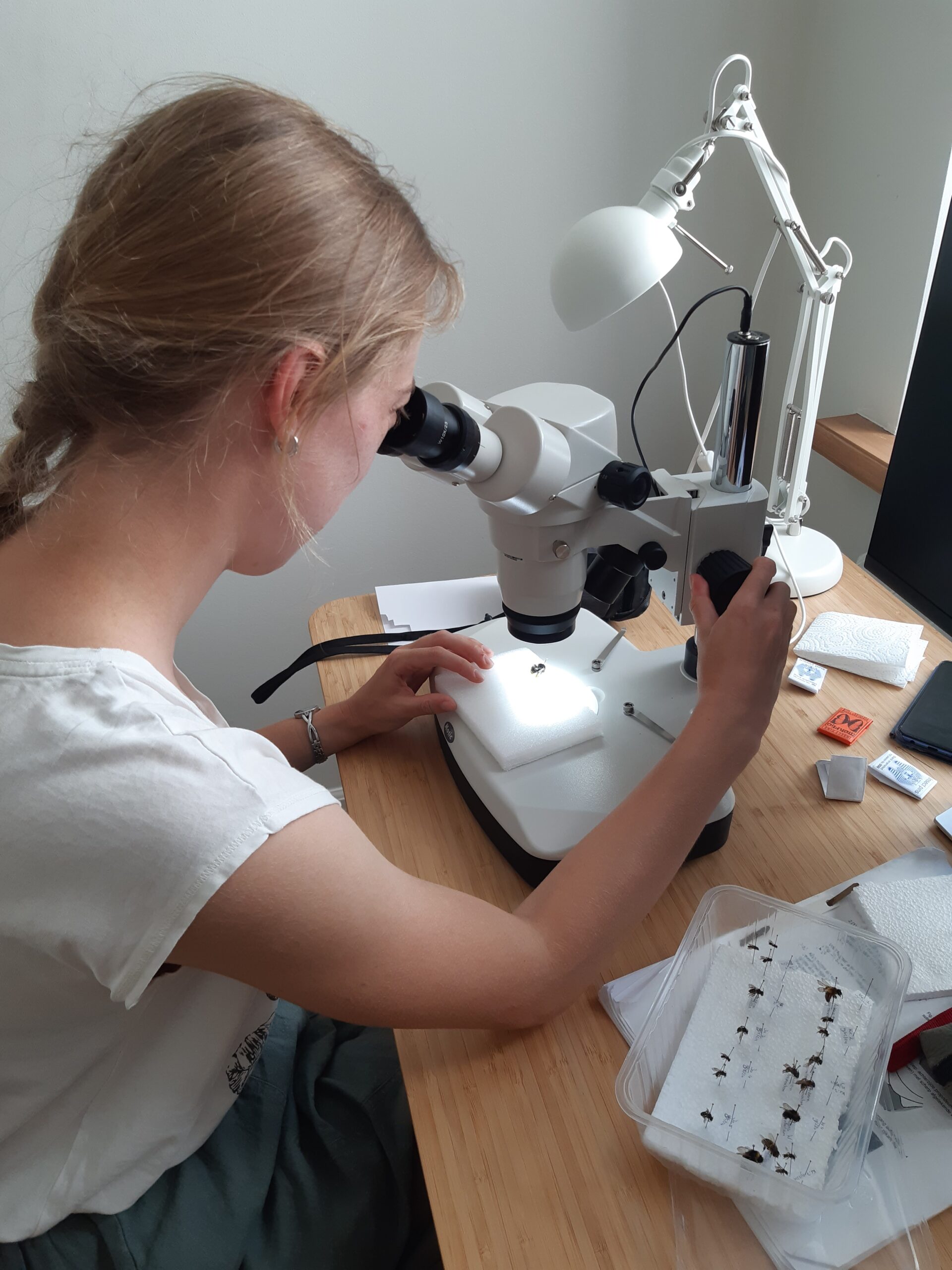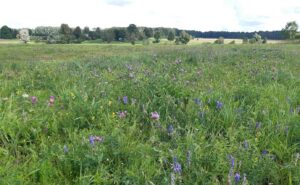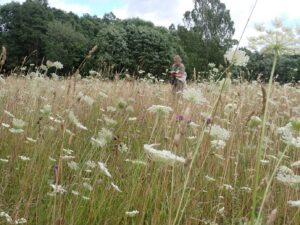For the latest buzz around bees in Latvian grasslands, we heard from Anda Ādamsone-Fiskoviča and Maja Raemakers at the Baltic Studies Centre (BSC) in Riga. The capital of Latvia is still surrounded by lush forests, serene lakes and rolling hills – the ideal place to study natural and semi-natural habitats. Each rural landscape has its own charm – and its own wildlife.
Different disciplines
Team leader and senior researcher Anda is a sociologist who assesses socio-economic benefits as well as user and consumer perspectives. In addition, she analyses the policy framework for pollinator restoration. Anda also has a background in science and technology studies, which allows her to reflect on the work of natural scientists in pollinator studies.

Maja is doing an internship that specifically focuses on a monitoring task in the RestPoll project. She is a biology Master’s student from the Netherlands, passionate about ecology and biodiversity. Maja focuses on bee life in Latvian grasslands, exploring the differences between degraded and restored sites across eight farms in Latvia.
Baltic Studies Centre (BSC)
The BSC has been busy with research projects on sustainable farming already for several decades. Its participation in RestPoll was therefore a logical step. Both the BSC and RestPoll are interested in preserving pollinators while creating benefits for society.
For the BSC, the basis of its local RestPoll activities is its collaboration with the GrassLIFE and GrassLIFE2 projects on restoring EU priority grasslands. As semi-natural grasslands also provide important pollinator-friendly places, the project activities directly align with RestPoll’s aim of restoring more wild pollinator habitats.
Grassland habitats
These grasslands are where pollinators nest and feed. However, excessive human activities are disrupting their habitats. The team seeks to learn which conditions affect grassland bees as input for conservation and restoration strategies.
The project teams from RestPoll and GrassLIFE/GrassLIFE2 are planning to cooperate under the Living Lab initiative. This includes organisation of joint workshops and social research activities. Currently, the teams already collaborate on the implementation of pollinator monitoring on Latvian farm fields in the case study area. These farms are making efforts to promote their sustainable management.
Field work
To see how the different sites are doing, Maja is doing transect walks along the grasslands. These slow walks follow a standard route to catch and identify bee species. The comparison between the sites will allow her to learn the difference in bee abundance and diversity among habitats.

Maja also investigates flowering plant species during her walks. She hopes to find out the relationships between the presence of bees and the availability of companion flowers. The diversity of flowering plants is thought to be important for supporting bee communities. Various insects prefer different colours, shapes and species of flower.
For a useful comparison, Maja studies the flora and fauna of three site types. Degraded sites result from intensive farming, while restored grasslands have been reclaimed from agricultural activities. Reference sites are grasslands featuring good level of biodiversity, which serve as a guideline for habitat restoration. In practice, though, it was not always straightforward to distinguish the site type, as fields change over time.
Early results and future outlook
Although the research is in its initial stages, Maja’s observations point to differences in bee communities among the various site types. Surprisingly, restored sites seem to have fewer bees. Maja suspects that grasslands may need some time to recover from the restoration activities and develop more diversity.
Maja went on a number of additional transect walks until the end of summer, finishing her fieldwork in mid-August. By having multiple rounds of monitoring, her fieldwork showed variations in bee and flower life over time. In the end, her intention was that her efforts might contribute knowledge that can drive positive environmental change.
Behind the scenes
Check out the photos below to get a glimpse of the pollinator monitoring in Latvia (photographer: Anda Ādamsone-Fiskoviča).

A reference site on one of the farms included in the pollinator monitoring in Latvia.

Maja taking notes during a transect walk in one of the monitoring sites.

A flower “visitor” on one of the monitoring sites.

